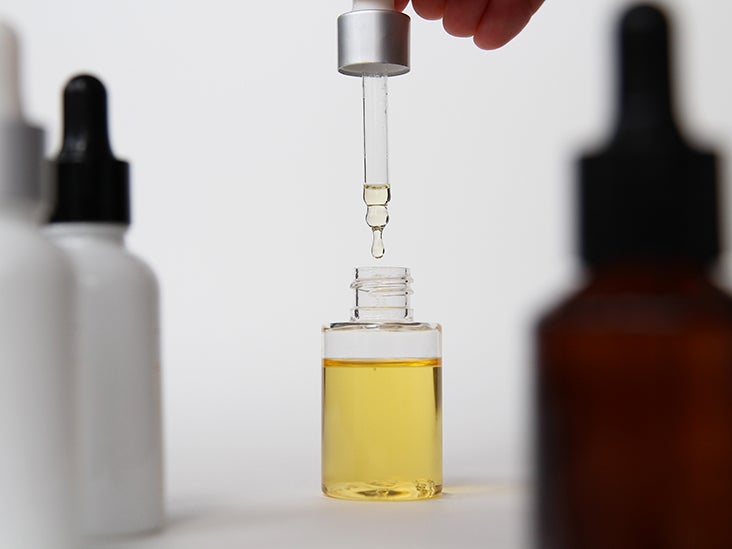Infections: Symptoms, Types, Causes, Treatments, List, and More
Fast facts
- According to the Centers for Disease Control and Prevention (CDC), infectious and parasitic diseases account for about 15.5 million doctor's visits and 3.7 million emergency room visits each year.
- Many infections are preventable through vaccination. The World Health Organization (WHO) estimates that vaccinations prevent 2 to 3 million deaths each year.
- Antimicrobial resistance continues to be a public health threat. Some organisms of concern include drug-resistant strains of gonorrhea, staph bacteria, and Candida yeast.
- New causes of infection are always emerging. Some examples you may be familiar with include severe acute respiratory syndrome (SARS) and Zika virus.
An infection occurs when another organism enters your body and causes disease. The organisms that cause infections are very diverse and can include things like viruses, bacteria, fungi, and parasites.
You can acquire an infection in many different ways, such as directly from a person with an infection, via contaminated food or water, and even through the bite of an insect.
Let's take a closer look at infections, the types of organisms that cause them, and actions you can take to help prevent becoming ill.
Below, we'll explore the different types of infections, list some examples you may be familiar with, and look into some possible treatments.
Viral infections
Viruses are very tiny infectious organisms. They're even smaller than bacteria. On the most basic level, a virus is composed of a piece of genetic material that's surrounded by a protein shell. Some viruses may have an additional envelope or other features on their surface.
Viruses are parasitic and require a host cell in which to carry out their life cycle. Once the virus has entered the host cell, it's able to use cellular components to reproduce. New viruses are released from the host cell, a process that'll sometimes cause the host cell to die.
Some examples of viral infections include:
- influenza (the flu)
- common cold
- measles
- rubella
- chickenpox
- norovirus
- polio
- infectious mononucleosis (mono)
- herpes simplex virus (HSV)
- human papillomavirus (HPV)
- human immunodeficiency virus (HIV)
- viral hepatitis, which can include hepatitis A, B, C, D, and E
- viral meningitis
- West Nile Virus
- rabies
- ebola
Possible treatments
Most of the time, the treatment of viral infections centers on relieving symptoms until your immune system clears the infection.
In some cases, antiviral drugs may be available to help treat a viral infection. Some examples of viral infections for which antivirals are available include HIV, herpes, and hepatitis C.
Some viruses stay with you for life once you've been infected. They can lie dormant within your body and may reactivate. Some examples include herpes simplex virus (HSV) and varicella-zoster virus (VZV).
rememberIt's important to remember that antibiotics aren't effective in treating a viral infection.
Bacterial infections
Bacteria are single-celled microorganisms. They're very diverse, coming in a variety of different shapes and sizes.
Bacteria can be found in all sorts of environments, including soil, bodies of water, and in or on our bodies. Some can survive extreme temperatures or even radiation exposure.
Although there are a great many bacteria in and on our bodies, these bacteria often don't cause disease. In fact, the bacteria in our digestive tract can help us digest our food.
However, sometimes bacteria can enter our bodies and cause an infection. Some examples of bacterial infections include:
- strep throat
- bacterial urinary tract infections (UTIs), often caused by coliform bacteria
- bacterial food poisoning, often caused by E. coli, Salmonella, or Shigella
- bacterial cellulitis, such as due to Staphylococcus aureus (MRSA)
- bacterial vaginosis
- gonorrhea
- chlamydia
- syphilis
- Clostridium difficile (C. diff)
- tuberculosis
- whooping cough
- pneumococcal pneumonia
- bacterial meningitis
- Lyme disease
- cholera
- botulism
- tetanus
- anthrax
Possible treatments
Bacterial infections are most often treated with antibiotics. Antibiotics are medications that affect bacterial growth. They can either impede bacteria from multiplying or kill them outright.
There are different classes of antibiotics. The one you're prescribed will depend on what type of bacterium is causing your infection. Additionally, misuse of antibiotics has caused many bacteria to develop resistance to them.
take as prescribedIf you're prescribed antibiotics for a bacterial infection, take the entire course of antibiotics — even if you begin to feel better after a few days. Not doing this can prevent the infection from clearing and can contribute to antibiotic resistance.
Fungal infections
Fungi are another diverse group of organisms that can include things like yeasts and molds. They can be found throughout the environment, including in the soil, indoors in moist areas like bathrooms, and on or in our bodies.
Sometimes fungi are so small that you can't see them with the naked eye. Other times, you're able to see them, such as when you notice mold on your bathroom tile.
Not all fungi can make you ill, but some examples of fungal infections include:
- vaginal yeast infections
- ringworm
- athlete's foot
- thrush
- aspergillosis
- histoplasmosis
- Cryptococcus infection
- fungal meningitis
Possible treatments
Fungal infections can be treated with antifungal medications. The type of medication that you're prescribed will depend on the type of fungal infection you have.
For example, a topical antifungal cream may be prescribed for conditions like ringworm or athlete's foot. Oral antifungal medications are also available. More severe fungal infections may require intravenous (IV) antifungal medication.
Parasitic infections
Parasites live on or in a host organism and get food or other nutrients at the host's expense. There are three types of parasites that can cause illness in humans:
- Protozoa: small, one-celled organisms
- Helminths: larger, worm-like organisms
- Ectoparasites: organisms such as fleas, ticks, and lice
Some examples of infections that are caused by parasites include:
- malaria
- toxoplasmosis
- trichomoniasis
- giardiasis
- tapeworm infection
- roundworm infection
- pubic and head lice
- scabies
- leishmaniasis
- river blindness
Possible treatments
As with bacterial and fungal infections, there are specific drugs available to treat a parasitic infection. The type of antiparasitic medication that you'll need to take will depend on the type of parasite that's causing your infection.
Prions
A prion actually isn't an organism at all — it's a protein. Prions can affect normal body proteins and cause them to fold into abnormal shapes. They can cause development of dementia and difficulties walking or speaking.
Prion diseases are very rare. Only 300 cases are reported in the United States each year.
While some prion conditions are inherited, others can be acquired through consuming contaminated food and are considered infectious. Examples include variant Creutzfeldt-Jakob disease (related to mad cow disease) and kuru.
Possible treatments
There's currently no curative treatment for prion diseases. However, there are medications that may slow their progression.
The symptoms of an infection can vary depending on the type of infection that you have. Some general symptoms that can indicate you may have an infection include:
- fever or chills
- body aches and pains
- feeling tired or fatigued
- coughing or sneezing
- digestive upset, such as nausea, vomiting, or diarrhea
There are some situations that should always trigger a visit to your doctor.
See a doctor if you have:
- symptoms that worsen or don't improve with at-home care
- symptoms that are prolonged or recur
- difficulty breathing
- a severe headache that occurs with a high fever
- a rash
- unexplained swelling
- a bite from an animal
It's also possible for you to have an infection without having any symptoms. Some examples of infections that don't always cause symptoms include HPV, gonorrhea, and chlamydia.
You can get an infection in many different ways.
Direct contact
Some, but not all, infections can spread when you come directly into contact with a person who has an infection, whether through touching, kissing, or having sex.
Direct contact with the bodily fluids of a person who has an infection can also spread infections in some instances. This can include things like:
- blood
- nasal secretions
- saliva
- semen
- vaginal secretions
Lastly, some infections can be spread directly from an infected mother to her child either through the placenta or during childbirth.
Indirect contact
Some infectious organisms can be found throughout your environment. You can come into contact with these things and then spread the infection to yourself.
A common example of this is when someone with the flu coughs or sneezes. Influenza virus can then be present in the air or on objects such as door and faucet handles. If you touch a contaminated object and then touch your face, mouth, or nose, you may become infected.
Through contaminated food or water
In some cases, food or water may be contaminated with infectious organisms. You can get these infections by consuming things like:
- foods prepped or prepared in unsanitary conditions
- raw or undercooked foods, such as produce, meats, or seafood
- improperly canned foods
- unpasteurized milks or juices
- foods that have been improperly stored or refrigerated
From an infected animal
Some infections are spread to people from an infected animal. One example is the rabies virus, which you can get if an infected animal bites you.
Another example is toxoplasmosis. You can come down with this parasitic disease from changing an infected cat's litter box.
From a bug bite
There are many different types of biting bugs, including ticks, mosquitoes, and lice. In some cases, you can get an infection if a bug carrying around an infectious microorganism bites you. Some examples include malaria, Lyme disease, and West Nile Virus.
all infections are differentNot all infections are spread in the same way. While one infection may be transmitted via infected blood, another may be transmitted by the bite of an insect. It's always important to consider the specific infection when talking about transmission.
Some infections have very characteristic symptoms. Your doctor may be able to make a diagnosis based off of these symptoms, your medical history, and a physical examination.
In other cases, it can be hard to determine what type of organism may be causing your condition. For example, some bacterial and viral infections can have very similar symptoms.
In cases where it's unclear what's causing your infection, your doctor may take a sample from your body to be tested in a laboratory. Where this sample is collected from depends on your illness and the type of organism suspected. Some sample types can include:
- blood
- urine
- stool
- nasal or throat
- sputum
- cerebrospinal fluid (CSF)
Your doctor may also use imaging tests, such as an X-ray, CT scan, or MRI scan. In some cases, they may also want to take a biopsy of the affected tissue to examine it.
There are many actions that you can take to prevent the spread of infections. Be sure to follow the tips below:
- Practice good hand hygiene. Wash your hands often, especially before eating or handling food, after using the toilet, and before touching your face or mouth.
- Get vaccinated. Many infections can be prevented through vaccines. Examples include, but aren't limited to: measles, whooping cough, and hepatitis B.
- Avoid sharing personal items. These include drinking glasses, toothbrushes, and razor blades.
- Practice safe sex.
- Cover cuts or scrapes. This can lessen the chances that they'll become infected. Don't pick or scratch them.
- Use insect repellents or sprays. These products can help you avoid being bitten by mosquitoes or ticks.
- Be careful with food. Always prepare food in sanitary conditions, and make sure it's heated to the proper temperature before eating.
- Avoid wild animals. Make sure to have any animal bites examined by a doctor.
- Know before you go. If you're traveling, be aware of any infections common to the area where you'll be staying. Some of them may even have vaccines available.
- Cover your mouth when you cough. If you're sick, be sure to dispose of all used tissues properly. If you don't have a tissue, cough into the crook of your elbow instead of your hand.
- Stay home if you're sick. This can prevent you from spreading an infection. Make sure to ask your doctor when you can return to work or school.
Infections can be caused by a variety of different organisms, including viruses, bacteria, fungi, and parasites. The different ways that you can get an infection can be just as diverse as the organisms that cause them.
While some infections may be treated at home, you should always contact your doctor if you have symptoms of an infection that aren't getting better, are getting worse, or recur. You may need additional medications to treat your condition.
- The reason you never moulding acne 7406 views
- 8 cm long by parasites in the brain boys 5297 views
- How to handle when you hand stab at dằm 3659 views
- Minor concessions to children prone to bacterial infection 8243 views
- The unexpected healing from betel 6718 views
- Big belly ... about to born babies 4125 views
-
 6 interesting genetic traits that children will inherit from their parents
6 interesting genetic traits that children will inherit from their parents
-
 7 effects of asparagus on child development
7 effects of asparagus on child development
-
 Does cutting blood hair for babies bring good luck?
Does cutting blood hair for babies bring good luck?
-
 The more babies eat, the higher the height they develop, especially the second kind
The more babies eat, the higher the height they develop, especially the second kind
-
 Children with chicken pox should eat to quickly recover from the disease, without leaving a deep scar?
Children with chicken pox should eat to quickly recover from the disease, without leaving a deep scar?
-
 The more food is cooked, the better it can be for health, especially the second type
The more food is cooked, the better it can be for health, especially the second type
-
 Do Nose Piercings Hurt? 18 FAQs on What to Expect
Do Nose Piercings Hurt? 18 FAQs on What to Expect
-
 Carrot Seed Oil Benefits and Uses
Carrot Seed Oil Benefits and Uses
-
 Jumping Lunges: How to, Tips, and Exercise to Pair Them With
Jumping Lunges: How to, Tips, and Exercise to Pair Them With
-
 All About Lip Tattoo: What to Expect, Cost, Risks, Touch-Ups & More
All About Lip Tattoo: What to Expect, Cost, Risks, Touch-Ups & More
-
 Why Not to Use Egg White for Your Face, Risks & Why It Doesn't Work
Why Not to Use Egg White for Your Face, Risks & Why It Doesn't Work
-
 Answers About a Mole on Your Baby: Diagnosis, Treatment & More
Answers About a Mole on Your Baby: Diagnosis, Treatment & More































